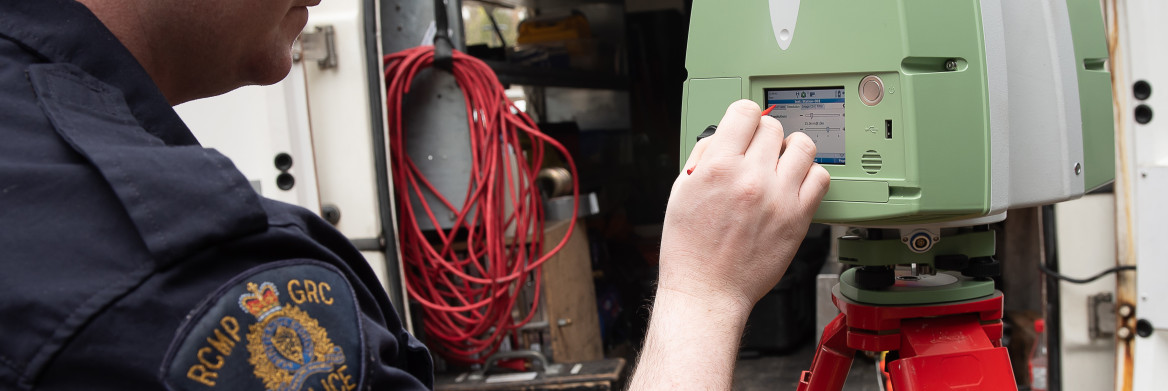In the blink of an eye, fatal traffic accidents tragically end a life and kick start the work of highly trained police officers who seek to explain what happened.
Their findings often lead to improved road-and-highway safety measures that can ultimately save lives.
"We're the ones who make sense of it,
" says S/Sgt. Dave Jewers, unit commander of the RCMP's Lower Mainland Integrated Collision Analysis and Reconstruction Service (ICARS), which is based in Surrey, B.C.
The unit was formed in 2008 to integrate collision analysts and reconstructionists that were previously attached directly to detachments and traffic units. Its members investigate all vehicle collisions that result in serious injury or death.
Policing and science
When the call comes in for service, ICARS members — who responded to 199 incidents in 2017 — arrive with 2D and 3D scanners and GPS technology that can produce high-quality crash-site images. Their work involves complex measurements and math calculations to determine what caused the accident. Speeds are determined through evidence such as tire marks and the distances that objects have been thrown after contact.
"If the accident is serious enough, we can come in, collect the evidence and figure out what's going on,
" says reconstructionist Cpl. Stephen Hilliard.
Cst. Kyle McStravick, an ICARS collision analyst, operates one of the team's eight 3D laser scanners, a $100,000 piece of equipment that recreates precise, high-resolution crime-scene images by documenting millions of precise laser measurements around the site. Those points are then used to build a 3D image to help investigators understand how the accident happened.
"The more angles we set up, we get a more complete picture,
" says McStravick. "For instance, there could be a gouge mark that we didn't see, the scanner will pick that up.
"
Team members also use standard video technology and camera footage.
Cpl. Rick Neger was behind the wheel of an 18-wheeler when ICARS members filmed and reconstructed an accident scene to determine the coefficient of friction.
"That means we had to determine how slippery the road was,
" says Neger, who pointed out the test was conducted to confirm the data collected on site. "We had to find out, are we using the information correctly and how hard was the truck braking at the time of the accident.
"
The view from above
Remotely piloted aircraft also provide images from above. But that's nothing new for ICARS.
The team has been using remotely piloted aircraft, also called drones, since 2011 and an ICARS member wrote divisional and national policies for their use by the RCMP.
The aircraft's camera provides crystal-clear images of accidents, such as one that recently involved a logging truck that spilled some of its cargo and a small amount of fuel into a nearby waterway in Mission, B.C. The device meticulously recorded the accident scene, the debris field and tire marks in vivid detail.
"In 15 or 20 minutes, it's capable of capturing everything you need,
" says Cpl. Gord Parsons.
That information is eventually uploaded to a large computer screen at the ICARS base in Surrey, where investigators will create and study a comprehensive image that can be manipulated to display detailed views of the accident scene, from multiple angles. These different angles can reveal details that might have been overlooked by the first on-the-scene traffic investigators. It can also be used to create a precise scale diagram.
It's hard work that can sometimes masquerade the emotional side of a highly analytical job that involves working where a fatal accident has just occurred.
"There are instances that get to us all, specifically for me it's files involving children,
" says McStravick. "On those occasions, I go home and spend as much time with my children and family as possible. It's really the social aspect of our work and family life that helps us cope with these situations.
"
Nevertheless, team members understand their role and do their job, and that, Jewers says, can lead to road infrastructure reforms.
"A lot of the guys like to say we're giving a voice to the dead,
" says Jewers. "But that means we can also understand what happened and sometimes make recommendations to improve road safety. We can save lives. That work leads to greater road safety.
"
